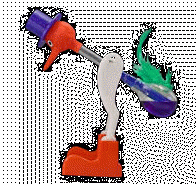|
...stars and galaxies...
free
simulations, worksheets, videos, images, animations and more.
|
|
|
|
|
|
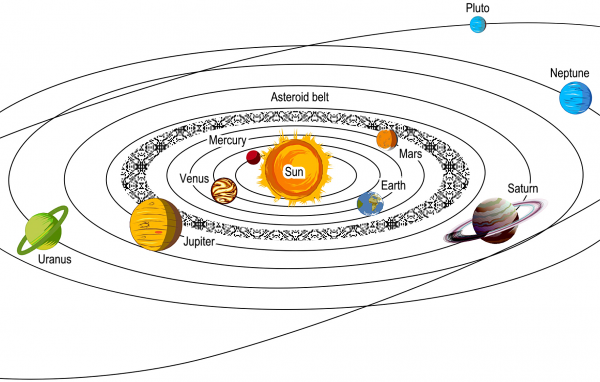
|
|
• Know
that...
• Be
able to describe...
• Be able to
state...
• Be able to
explain...
|
|
|
|
|
|
|
|

Hands up!

I know the answer! |
|
Find someone who knows:
1) The names of the
planets in order.
2) Three differences
between the
terrestrial planets and the
gas giants.
3) A fact
about a planet in our solar system.
4) The name of our
nearest star.
5) The name of a
moon in our solar system.
6) What a galaxy is,
and the name of our galaxy.
7) What an asteroid
is and where most asteroids are found.
8) What a comet is,
and the shape of its orbit.
9) What causes
shooting stars, and the difference between a
meteor and a
meteorite.
10) What satellites are,
and some of their uses.
Your teacher will you which questions to discuss.
|
|
|
|
Task 3 - Researching stars, galaxies and
nebulae
|
|
|
|

|
|
You
are going to find out about the
different types of star,
and how they are formed.
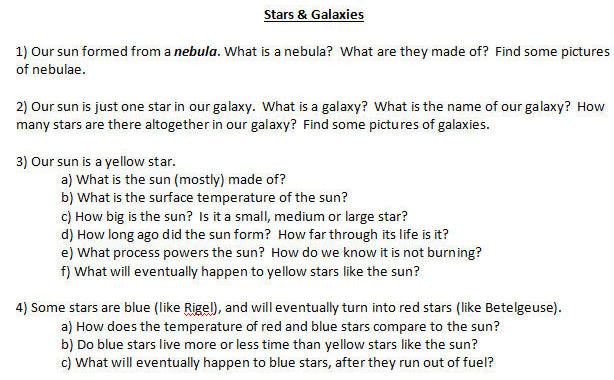
Click the image above to
download this task as a word document.
|
|
|
|
Task 4 - A tour of the stars
|
|
| |
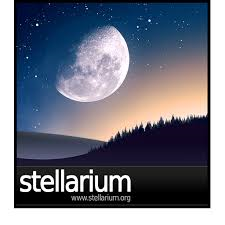
You will need to install the
Stellarium software. It is fantastic and free!
|
|
Your teacher will give you a
tour of some constellations,
and show you some different types
of stars, using the
Stellarium planetarium software.
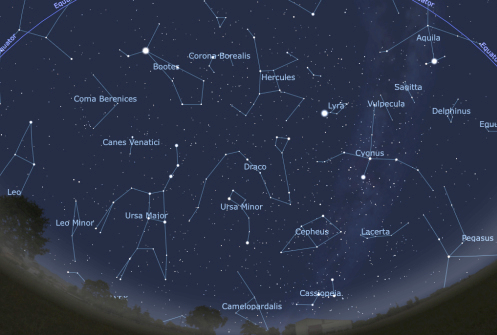
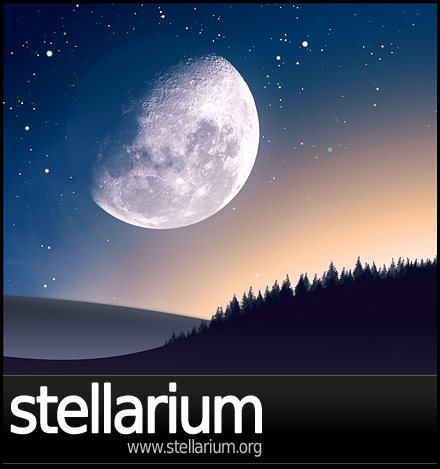
NOTE: look at circumpolar constellations (e.g.
Ursamajor, Cassiopeia), North star, red stars (e.g.
Betelgeuse), blue stars (e.g. Rigel), binary star systems
(e.g. Sirius). Teacher notes coming soon!
|
|
STELLARIUM LINK/ACTIVITY
DETAILS
|
|
Task 4 - Fill in the missing words.
|
|
| |
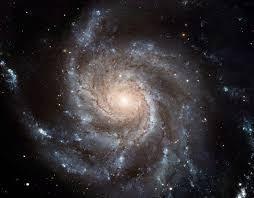
|
|
L

|
|
|
|
|
|
| |

|
|
Try to observe some of the constellations you
learned about in class.

Which constellations did you manage to
observe?
Is your constellation visible all year round,
or only at certain times of year?
What time did you observe?
What position was the constellation in the
sky? Draw a diagram.
Find out about the mythology associated with
your constellation.
|
|
|
|
|
|
| |

|
|
The fantastic image of the Pinwheel
Galaxy, NGC5457, is courtesy of the European Space
Agency & NASA.
Credit: Image: European Space Agency & NASA.
Acknowledgements: Project Investigators for the original
Hubble data: K.D. Kuntz (GSFC), F. Bresolin (University of
Hawaii), J. Trauger (JPL), J. Mould (NOAO), and Y.-H. Chu
(University of Illinois, Urbana) Image processing: Davide De
Martin (ESA/Hubble) CFHT image: Canada-France-Hawaii
Telescope/J.-C. Cuillandre/Coelum NOAO image: George Jacoby,
Bruce Bohannan, Mark Hanna/NOAO/AURA/NSF - direct link
here at spacetelescope.org. See also:
this page at hubblesite.org , CC BY 3.0 - visit
this page.

|
|
|
|
